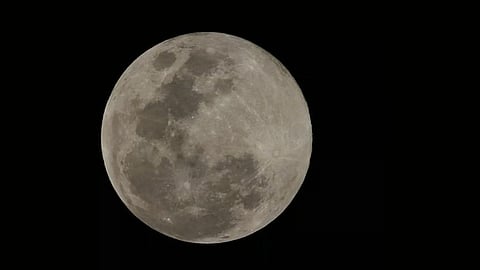

According to a new study led by academics from University College London (UCL) and Peking University, the Moon's mysterious far side may be substantially cooler deep into its interior than the side that permanently faces Earth.
The study, published in Nature Geoscience, examined rock and soil particles retrieved in 2024 by China's Chang'e-6 spacecraft from a massive crater on the Moon's far side.
Using advanced chemical analysis, the scientists discovered that the sample, which is around 2.8 billion years old, crystallised from lava at a temperature of around 1,100 degrees Celsius, which is about 100 degrees Celsius lower than near-side rocks analysed by Apollo missions, India Today reports.
Professor Yang Li, a co-author from UCL's Earth Sciences department, called the occurrence one of the "great mysteries" of lunar science.
The far side, with its thicker crust and craggy, cratered topography, appears to have had less volcanic activity than the close side.
Researchers believe this is due to a lack of heat-producing components like uranium, thorium, and potassium within its interior. These elements, which are normally linked with volcanic activity, appear to be more abundant on the near side, where enormous basalt plains may be seen.
The imbalance could have been generated by a major impact early in the Moon's history, redistributing heat-producing material, or by the collision of two smaller moonlets, resulting in today's lunar body. Another explanation is that the Earth's gravitational pull helped keep hotter temperatures beneath the side it is usually facing.
Researchers aim to learn more about whether these thermal disparities persist now, as the Moon slowly cools after its volcanic origins billions of years ago.
